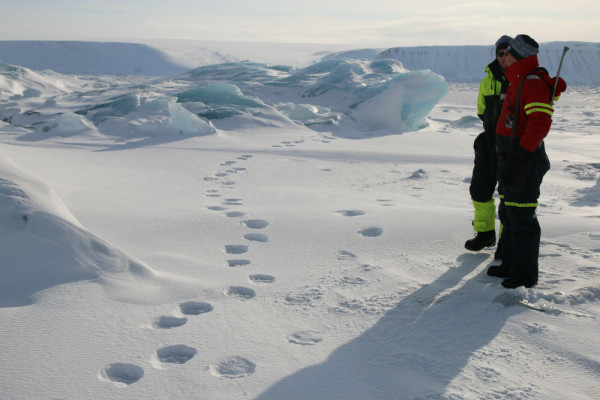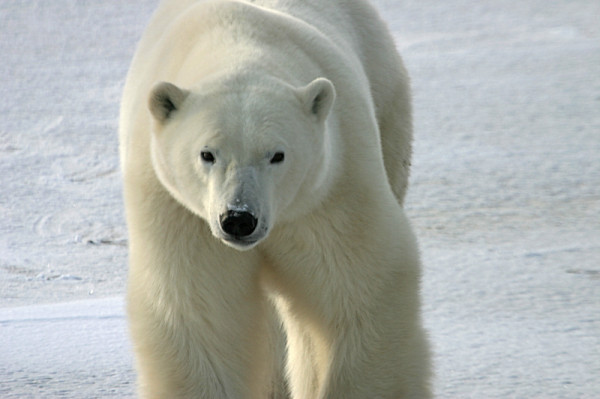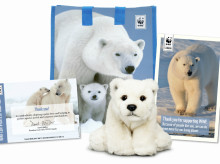Lessons from a polar bear paw print
What can we learn from a polar bear paw print in the snow? More now than ever before: today, a research team working in partnership with WWF announced that, for the first time, it was able to successfully extract DNA from a polar bear track!
Genetic research is incredibly important for conservation, but collecting it from polar bears has historically been much more invasive, requiring scientists to fly around in helicopters to gather it from sedated bears. Recognizing the need for other options, WWF supports a range of initiatives to find less expensive, risky and intrusive ways of counting and learning about bears (such as using satellite imagery), in order to better understand how polar bears are faring in the face of climate change. This information is critical: it’s used to determine everything from the status of the species (internationally and in Canada) to species and habitat management plans. Getting more current and accurate information means we can make informed, science-based decisions.
The gathering of the samples took place earlier this year during the WWF-Canon and Norwegian Polar Institute expedition in Svalbard, off the coast of Norway. The WWF team scooped up snow from polar bear tracks, then carefully transferred the samples to sterile bags for later analysis. The SPYGEN laboratory in France was then able to extract DNA from the track of a bear that was observed by the WWF team. The next step is to see what more can be learned about the bear from the DNA through further analysis, and then to see if the success can be replicated for other species. If it can be applied more broadly, this could have real implications for conservation, enabling much more affordable and easier research to better understand the size and health of species populations. A big step for science, thanks to a giant polar bear paw print.




